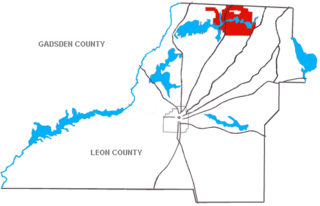
Harry Payne Whitney was an American businessman, thoroughbred horse breeder, and member of the prominent Whitney family.
The Alfred B. Maclay State Gardens is a 1,176-acre (4.76 km2) Florida State Park, botanical garden and historic site, located in Tallahassee, in northeastern Florida. The address is 3540 Thomasville Road.
Tall Timbers Research Station and Land Conservancy is a research and learning facility located in northern Leon County, Florida, just off County Road 12 on the north side of Lake Iamonia. Tall Timbers researches the areas of fire ecology, resource management, forestry, game bird management, and vertebrate ecology.

Oaklawn Plantation was a large plantation of 5326 acres (21½ km2) in northern Leon County in the U.S. state of Florida. It was established around 1850 by Captain William Lester of Burke County, Georgia.

Llangollen Farm is an historic American horse and cattle farm located in western Loudoun County, Virginia on Trappe Rd. near Upperville at the foot of the Blue Ridge Mountains. Eight miles (13 km) from the town of Middleburg, the area is home to a number of prominent Thoroughbred-breeding farms and a large country estates. The farm was listed on the National Register of Historic Places in 2017.

Tall Timbers Plantation was a quail hunting plantation located in northern Leon County, Florida, United States established by Edward Beadel in 1895.

The Mordecai House, built in 1785, is a registered historical landmark and museum in Raleigh, North Carolina that is the centerpiece of Mordecai Historic Park, adjacent to the Historic Oakwood neighborhood. It is the oldest residence in Raleigh on its original foundation. In addition to the house, the Park includes the birthplace and childhood home of President Andrew Johnson, the Ellen Mordecai Garden, the Badger-Iredell Law Office, Allen Kitchen and St. Mark's Chapel, a popular site for weddings. It is located in the Mordecai Place Historic District.

The Whitney Plantation Historic District is preserved by the Whitney Institute, a non-profit whose mission is to educate the public about the history and legacies of slavery in the Southern United States. The district, including the main house and outbuildings, is preserved near Wallace, in St. John the Baptist Parish, Louisiana, on the River Road along the Mississippi River. Habitation Haydel was founded in 1752 by Ambroise Heidal, one of the many German immigrants who colonized the river parishes in the 18th century. His descendants owned it until 1860. In 1867 it was sold to businessman Bradish Johnson who renamed it Whitney.

Oak Hill Plantation is a privately-owned conservation preserve created in the late 20th century by T. K. Wetherell with his wife, Virginia Bass Wetherell. The large personal residence is maintained by the present owner, Virginia Wetherell-Scott.
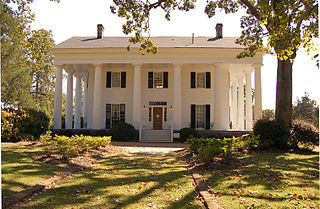
Barrington Hall is an 1842 Greek Revival-style plantation home, likely built by enslaved Africans and African Americans. It was the residence of Barrington King who, along with his father Roswell King, was the founder of the town of Roswell, in northern Fulton County, Georgia. The house was designed by Willis Ball. It was held by the family until 1995 and is listed on the National Register of Historic Places.
Hope Park was an 18th and 19th-century plantation in Fairfax County in the U.S. state of Virginia, where Dr. David Stuart (1753–1814), an old friend of and correspondent with George Washington lived with his wife, Eleanor Calvert Custis (1758–1811), and family. It was approximately 5 miles (8.0 km) southwest of Fairfax Court House.
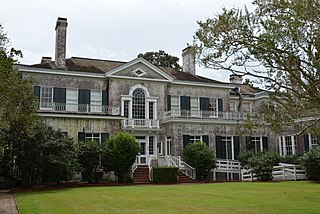
Pebble Hill Plantation is a plantation and museum located near Thomasville, Georgia. The plantation is listed on the National Register of Historic Places.

The Big Oak is a large live oak located in Thomasville, Georgia, in the United States at the corner of Crawford Street and Monroe Street. The Big Oak is one of many historic landmarks located in Thomasville. The Big Oak was one of the earliest trees registered with the Live Oak Society. Registered by P.C. Andrews in 1936, the Big Oak was the forty-ninth live oak registered. At the time of registration, the Big Oak's girth was 21 feet 6 inches.

Susina Plantation is an antebellum Greek Revival house and several dependencies on 140 acres near Beachton, Georgia, approximately 15 miles (24 km) southwest of the city of Thomasville, Georgia. It was originally called Cedar Grove. The house is listed on the National Register of Historic Places, and is currently a private residence.
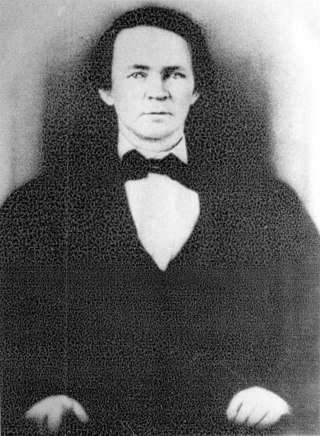
John Wind was an architect who worked in southwest Georgia in the United States from approximately 1838 until his death in 1863. He was born in Bristol, England, in 1819. John Wind designed the Greenwood, Susina, Oak Lawn, Pebble Hill, Eudora and Fair Oaks monumental plantation houses, the Thomas county courthouse and a few in-town cottages. William Warren Rogers writes "Some of Wind's work still exists and reveals him as one of the South's most talented but, unfortunately, least known architects." John Wind also worked as an inventor, jeweler, master mechanic and surveyor. He devised a clock that remained wound for one year and was awarded a patent for a cotton thresher and cleaner, Patent Number 5369. He was also the co-recipient of a corn husker and sheller patent in 1860. But it was his work as an architect that made him an enduring figure.
Cedar Grove Place is a historic building in Church Hill, Jefferson County, Mississippi.

The Curry Hill Plantation near Bainbridge, Georgia is a plantation begun in 1842 by Duncan Curry. It was several thousand acres in size, and was a stage coach stop on the stage coach line between Thomasville and Bainbridge. The Curry family lived in a log house at first, then in the 1850s lived in the former stage coach house while the main plantation house which stands today was built. The main house was built in the 1850s and includes Greek Revival elements.
Mill Creek Plantation, also known as Greenridge Plantation, near Thomasville in Thomas County, Georgia, is a 193.8 acres (78.4 ha) property which is listed on the National Register of Historic Places.
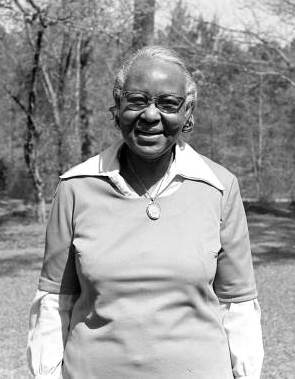
Flora Mae Hunter was an American cook and cookbook author. She was a longtime cook on plantations in northern Florida—in particular, cooking for 36 years at Horseshoe Plantation near Tallahassee, Florida. In 1979 she published a cookbook of recipes from her career cooking for the plantation's workers as well as the owners and guests, called Born in the Kitchen: Plain and Fancy Plantation Fixin's. In 1988, she was awarded a Florida Folk Heritage Award for her contributions to the "cultural resources" of the state.






